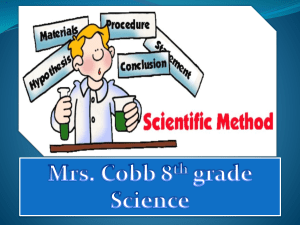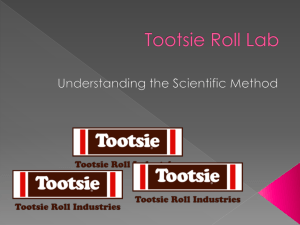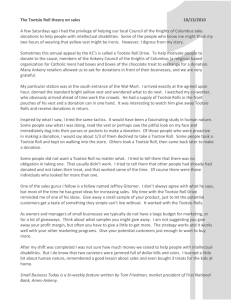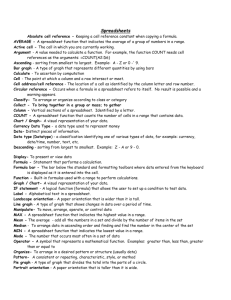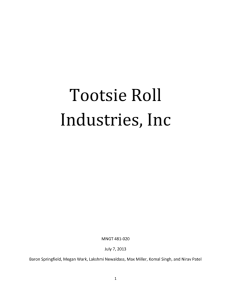Related Rates Investigation
advertisement
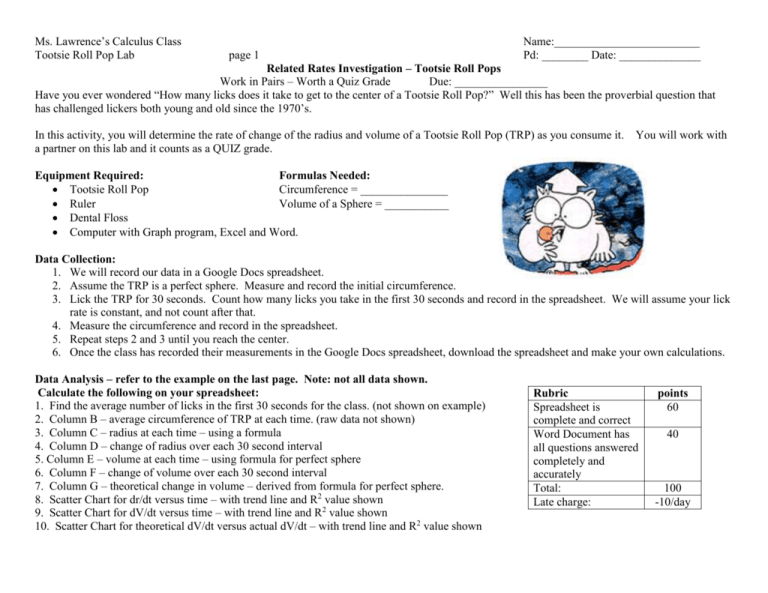
Ms. Lawrence’s Calculus Class Tootsie Roll Pop Lab page 1 Name:_________________________ Pd: ________ Date: ______________ Related Rates Investigation – Tootsie Roll Pops Work in Pairs – Worth a Quiz Grade Due: ________________ Have you ever wondered “How many licks does it take to get to the center of a Tootsie Roll Pop?” Well this has been the proverbial question that has challenged lickers both young and old since the 1970’s. In this activity, you will determine the rate of change of the radius and volume of a Tootsie Roll Pop (TRP) as you consume it. a partner on this lab and it counts as a QUIZ grade. You will work with Equipment Required: Formulas Needed: Tootsie Roll Pop Circumference = _______________ Ruler Volume of a Sphere = ___________ Dental Floss Computer with Graph program, Excel and Word. Data Collection: 1. We will record our data in a Google Docs spreadsheet. 2. Assume the TRP is a perfect sphere. Measure and record the initial circumference. 3. Lick the TRP for 30 seconds. Count how many licks you take in the first 30 seconds and record in the spreadsheet. We will assume your lick rate is constant, and not count after that. 4. Measure the circumference and record in the spreadsheet. 5. Repeat steps 2 and 3 until you reach the center. 6. Once the class has recorded their measurements in the Google Docs spreadsheet, download the spreadsheet and make your own calculations. Data Analysis – refer to the example on the last page. Note: not all data shown. Calculate the following on your spreadsheet: 1. Find the average number of licks in the first 30 seconds for the class. (not shown on example) 2. Column B – average circumference of TRP at each time. (raw data not shown) 3. Column C – radius at each time – using a formula 4. Column D – change of radius over each 30 second interval 5. Column E – volume at each time – using formula for perfect sphere 6. Column F – change of volume over each 30 second interval 7. Column G – theoretical change in volume – derived from formula for perfect sphere. 8. Scatter Chart for dr/dt versus time – with trend line and R2 value shown 9. Scatter Chart for dV/dt versus time – with trend line and R2 value shown 10. Scatter Chart for theoretical dV/dt versus actual dV/dt – with trend line and R2 value shown Rubric Spreadsheet is complete and correct Word Document has all questions answered completely and accurately Total: Late charge: points 60 40 100 -10/day Ms. Lawrence’s Calculus Class Name:_________________________ Tootsie Roll Pop Lab page 2 Pd: ________ Date: ______________ Lab Report – Answer the following questions using complete sentences. Put your Word document with these answers and your spreadsheet in a Folder with your name on it and drop your folder in the class folder on Google Docs. 1. 2. 3. 4. What happened to dr/dt as the radius decreased? What happened to dV/dt as the radius decreased? How well did the theoretical dV/dt correlate with the actual dV/dt? Using the number of licks you counted in the first 30 seconds, calculate how many licks it does take to reach the center of a TRP. Then calculate the number of licks it takes to reach the center of a TRP using the class average data. How do your measurements compare to the class average? 5. Describe at least 3 ways to improve this lab.
